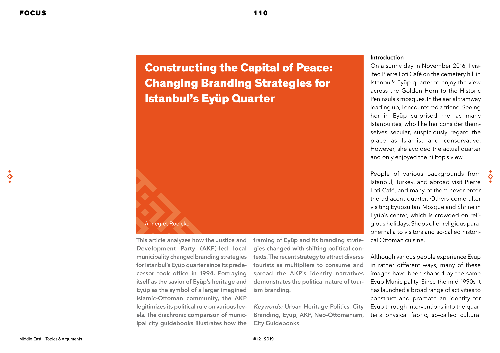Constructing the Capital of Peace: Changing Branding Strategies for Istanbul’s Eyüp Quarter
This article analyzes how the Justice and Development Party (AKP)-led local municipality changed branding strategies for Istanbul’s Eyüp quarter since its predecessor took office in 1994. Portraying itself as the savior of Eyüp’s heritage and Eyüp as the symbol of a larger imagined Islamic-Ottoman c...
I tiakina i:
| I whakaputaina i: | Middle East - Topics & Arguments |
|---|---|
| Kaituhi matua: | |
| Hōputu: | Artikel (Zeitschrift) |
| Reo: | Ingarihi |
| I whakaputaina: |
Philipps-Universität Marburg
2019
|
| Ngā marau: | |
| Urunga tuihono: | Urunga tuihono |
| Ngā Tūtohu: |
Kāore He Tūtohu, Me noho koe te mea tuatahi ki te tūtohu i tēnei pūkete!
|
| Whakarāpopototanga: | This article analyzes how the Justice and Development Party (AKP)-led local municipality changed branding strategies for Istanbul’s Eyüp quarter since its predecessor took office in 1994. Portraying itself as the savior of Eyüp’s heritage and Eyüp as the symbol of a larger imagined Islamic-Ottoman community, the AKP legitimizes its political rule on various levels. The diachronic comparison of municipal city guidebooks illustrates how the framing of Eyüp and its branding strategies changed with shifting political contexts. The recent strategy to attract diverse tourists as multipliers to consume and spread the AKP’s identity narratives demonstrates the political nature of tourism branding. |
|---|---|
| DOI: | 10.17192/meta.2019.12.7931 |
